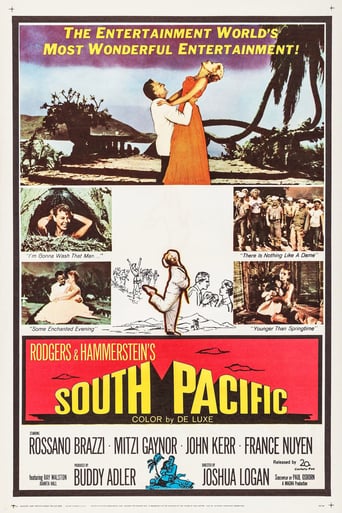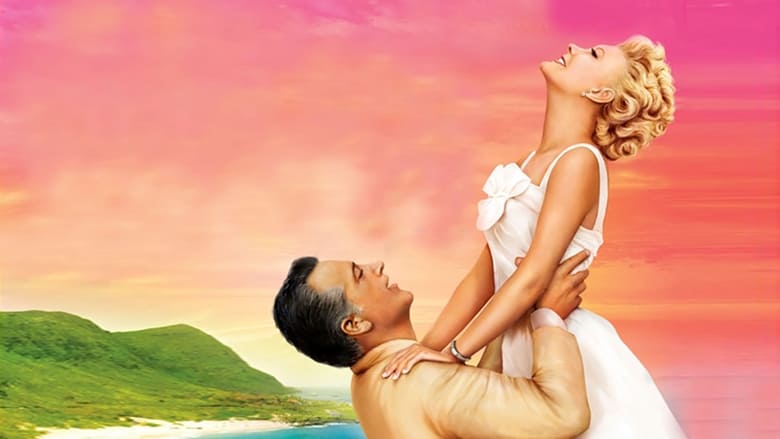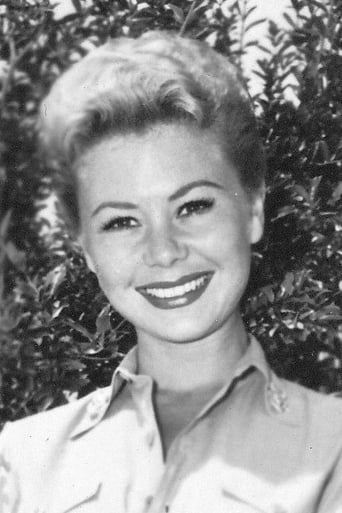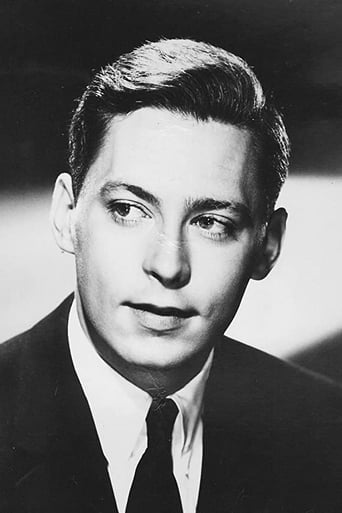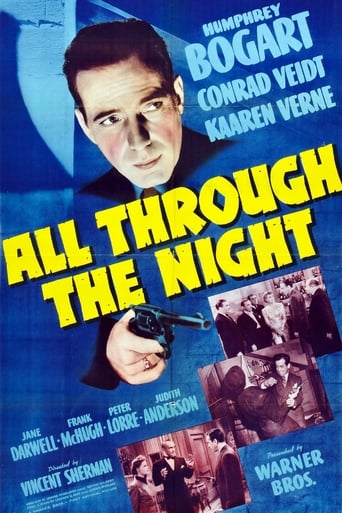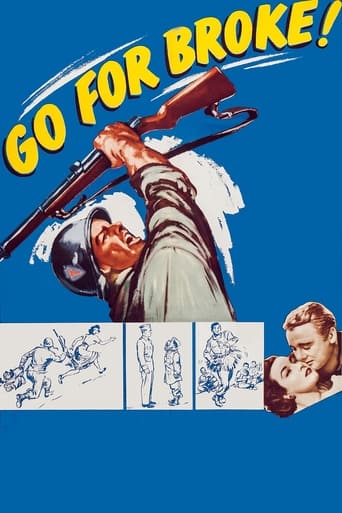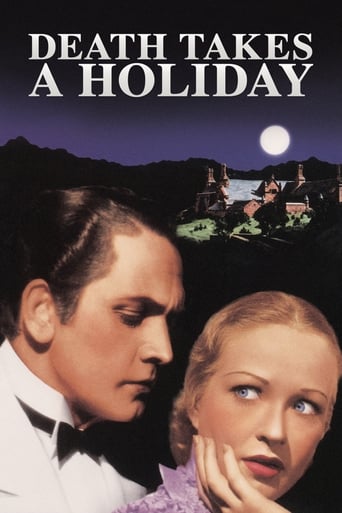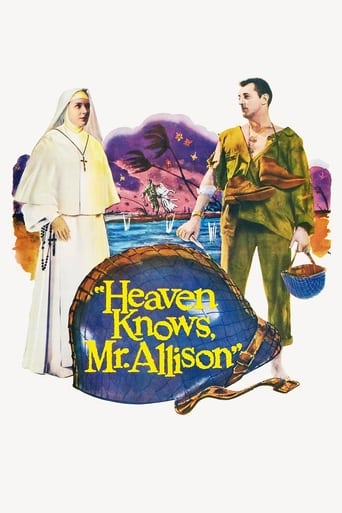South Pacific (1958)
Can a girl from Little Rock find happiness with a mature French planter she got to know one enchanted evening away from the military hospital where she is a nurse? Or should she just wash that man out of her hair? Bloody Mary is the philosopher of the island and it's hard to believe she could be the mother of Liat who has captured the heart of Lt. Joseph Cable USMC. While waiting for action in the war in the South Pacific, sailors and nurses put on a musical comedy show. The war gets closer and the saga of Nellie Forbush and Emile de Becque becomes serious drama.
Watch Trailer
Cast


Similar titles
Reviews
Best movie of this year hands down!
The performances transcend the film's tropes, grounding it in characters that feel more complete than this subgenre often produces.
There is, somehow, an interesting story here, as well as some good acting. There are also some good scenes
A great movie, one of the best of this year. There was a bit of confusion at one point in the plot, but nothing serious.
"South Pacific" is a hugely successful Rodgers and Hammerstein musical adapted from the stage to film. "Oklahoma" in 1943 was the first Broadway collaboration of Richard Rodgers and Oscar Hammerstein. They would soon garner recognition as the greatest musical team of all time. "South Pacific" opened on Broadway in 1949 and ran for more than five years. "Oklahoma" was made into a successful film in 1955, and "South Pacific" followed in 1958. It enjoyed enjoyed as much success as did the stage musical. "South Pacific" was the number one box office film of 1958. The story is based on a James Michener book of 1947, "Tales of the South Pacific." He wrote its collection of stories while serving in the U.S. Navy during World War II. He was stationed then in the New Hebrides Islands - today's Vanuatu. Michener's book earned a Pulitzer Prize in 1948. Rodgers and Hammerstein's musical play earned them a Pulitzer Prize for drama in 1950. Like "Oklahoma" before it, "South Pacific" tells a story of depth and meaning. In these stories, Rodgers and Hammerstein solidified a style that incorporates song and dance in the story, rather than as stand alone entertainment aside from the story. Indeed, "South Pacific" is set in a real time and place. The American naval forces are in the South Pacific of World War II, about to engage the Japanese. The plot also has two separate love stories and some comedy. And, it deals with racial prejudice, and overcoming it. This film is among my favorite musicals. Two years after the movie coming out, my high school put on the play. I was a member of the school orchestra that played all of the music for the play. "South Pacific" holds the Broadway record for most Tony awards. It's original 1949 production earned 11 Tony's and its 2008 revival garnered six Tony's, for a total of 17. Three Broadway productions tie with the second most total Tony's - 12. Yet, for all its popularity, recognition and endurance, the film of "South Pacific" seems to have been snubbed by regal Hollywood - the actors and moguls who make up the Academy of Motion Picture Arts and Sciences. Politics did indeed seem to be at play in the Academy Awards for 1958. "South Pacific," the number one box office draw of the year, was nominated for just three Oscars. It won one, for best sound. The fifth place film at the box office that year was "Gigi." It won nine Oscars of nine nominations. Yet, except for best costume, none of the production work on that film was equal to or better than that for "South Pacific." Most of "Gigi" was shot on stage or in sets. Most of "South Pacific was shot in Hawaii and location. The cast of "Gigi" was more prominent in the film industry, and it was made by MGM, the king of musicals studio. But, "South Pacific" wasn't made by a studio. Rodgers and Hammerstein created their own company for the movie. The studios were known to do a lot of campaigning for their favorite films. And, since "Gigi," was MGM's biggest property and musical that year, MGM probably spared no expense to garner votes for its film. Without the connections in Hollywood, "South Pacific" was at a clear disadvantage. So, Hollywood went for "Gigi" at the Academy Awards, and Hollywood's foreign press corps followed suit. "Gigi" won three Golden Globes and had three more nominations. "South Pacific" merely had three nominations. But politics of a time can't outlast superior quality and public favor. So, decades later, "South Pacific" remains a favorite film and stage play. And, "Gigi" is all but forgotten. The song, "Some Enchanted Evening," is ranked number 28 on the American Film Institute's 100 greatest songs from film. One song from "Gigi," made the list at number 58 - "Thank Heaven for Little Girls." But, besides "Some Enchanted Evening," other "South Pacific" songs continue to be sung and played decades later, where there are no memorable tunes from "Gigi." Other popular "South Pacific" songs are "Younger Than Springtime," "I'm In Love With a Wonderful Guy," "This Nearly Was Mine," and others. Perhaps nothing so typifies the politicking of the Academy Awards as the fact that the Oscar for the best song was for "Gigi." It's a dated, specific song that just isn't played or sung outside of an occasional theater play. And, it has no standing anywhere. While "Some Enchanted Evening" wasn't even nominated as best song but continues to be sung and played around the world.I also enjoyed the musical, "Gigi." But it's not on the level of "South Pacific." The story, songs and production of "South Pacific" put it in a level above the other film.
When you express it with a few songs and two entwined romances, the propaganda seems sweeter. But is still all propaganda. The songs are not great. Neither the acting performances. Still, it's not bad. Two and a half hours pass quickly on this musical. Mitzi Gaynor has some charm. Rossano Brazzi does not. The most pleasant and charming is young France Nuyen is the role of Liat. And her mother, Juanita Hall (Bloody Mary) is nice. Other actors, John Kerr, Ray Walston, Russ Brown, are OK. Ken Clark of "Special Mission Lady Chaplin" and "Tiffany memorandum" appears in a small role as Stewpot. Same Doug McClure, the one of "The Land That Time Forgot" and "Warlords of the Deep" appears as Pilot Hospital.
I have always had a soft spot for this musical, as I recall my parents (my mother, especially) playing the original LP over and over. My uncle, who served in the Navy in the South Pacific during WWII, loved it, too. The Blu-ray transfer is breath-taking and it is fun to see the restored version (though for those bits, the picture quality is quite faded). Yes, it's old fashioned, yes, it's a bit creaky, and, yes, those filters are a little strange, but just listen to that glorious R&H score, look at the beautiful scenery, and immerse yourself in excellent performances, and you have be taken away. I am a fan of Mitzi Gaynor, though many feel that Doris Day should have played the role. Doris could have done it justice, no doubt, but Mitzi had a wide-eyed freshness, excellent voice, and believability that was refreshing. They don't make musicals like this any more and I'll take this any day over most of the frenetic musicals of today (with their unmelodic scores).
I have always considered SOUTH PACIFIC to be Rodgers and Hammerstein's finest work: a musical drama in an era when musical dramas were rare, it was probably the most innovative and controversial of all their shows, with its anti-racism story line (epitomized in the great song "You've Got to Be Taught"), and its willingness to combine the cheeriness of the traditional musical comedy with the dark realities of the subject matter (World War II).Unfortunately, the film version, despite being directed by the legendary Joshua Logan and scripted not only by Logan and Rodgers and Hammerstein, but James A Michener, author of the source novel, is just not all that wonderful. Rodgers and Hammerstein knew how to write musicals, and all of their works, even the lesser ones, are at least interesting.I don't know what happened in the transition, but this movie is an over-produced, bloated, dreadfully photographed (the color palette is just awful) piece of work, clumsily assembled and poorly cast. Mitzi Gaynor is way too young-looking for the role of Nellie Forbush, and lacks the star power that Mary Martin brought to the role on the stage. Rossano Brazzi and John Kerr are okay, but WHY did Hollywood insist on casting actors in musicals who could not do their own singing? At least Gaynor does her own vocals; Brazzi and Kerr are both dubbed, and so, inexplicably, is Juanita Hall as Bloody Mary. Hall was more than capable of singing the role herself: she created the character on Broadway, but for some reason the filmmakers decided to use Muriel Smith's voice, throwing all credibility out the window because Muriel Smith's singing and Juanita Hall's talking did not bear the SLIGHTEST resemblance to each other.About the best thing I can say about this film is that the show is presented pretty much intact (the made-for-TV remake, while improving on some things, inexplicably excised the song "Happy Talk" on the grounds that it was too "politically incorrect. Oh please.). But of all the R&H shows, this one needed singing actors; it did not, for the most part, get them, and even one player who could sing was saddled with a bad overdub job. Thankfully, Ray Walston as Billis gets to do his own vocals, but that character is the one role in the show that does not require a great voice.Plus the thing goes on too long (some cuts run almost three hours); an egregious fault that one would not have expected from Logan, who should have had a better sense of pace than is shown here.I have seen regional theatre productions of this show that put the film to shame. Watching this film, I cannot help but ask why so much went so wrong.

